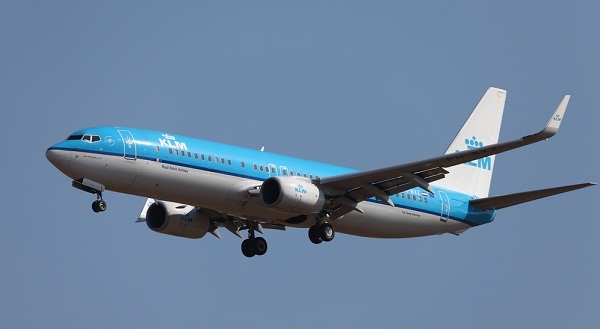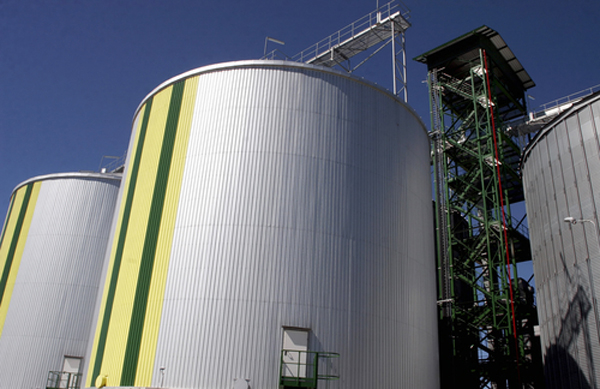Though not making the headlines with quite the speed of a few years ago, research and deployment of aviation biofuels continues. For good reason, despite some pretty amazing light planes flying powered by solar panels, it’s pretty unlikely that something the size of a commercial jetliner will be getting off the ground and completing its journey on solar power, at least any time soon. Powered aviation is simply a seriously energy-intensive activity.
Indeed, while for motorized ground transportation electricity has proven itself as more efficient than converting plants or waste products into biofuels and then burning them, for aviation liquid biofuels make a lot of sense in reducing emissions.

So where are we at, at the start of 2013?
All the enthusiastic statements from airline execs from some five years back, proclaiming that biofuels would start being used regularly on commercial flights within a few years, to put it bluntly, seem somewhat ridiculous in hindsight. We’re just not there yet.
Basically, despite many test flights being made, some with passengers—including the KLM’s NYC to Amsterdam flights happening over the next six months—biofuel use has made very few inroads into actual commercial usage.
All of which is too bad in many ways, with multiple studies showing that biofuels are more efficient in flight than fossil fuels, both in terms of engine efficiency, and in reduction of carbon emissions. Camelina in particular has been shown to be able to reduce emissions by 84%.
Work certainly continues though: in particular the US military is moving strongly forward with efforts to develop biofuels for use in both naval and air operations. Even though there was some vocal opposition in Congress last year, based on cost, the Navy’s Green Strike Force program keeps pushing forward, partnering with the Department of Energy to build refineries capable of producing 30 million gallons of biofuels annually.
The military concern in all of this is, of course, about being able to securely supply fuel for operations and reduce risk to troops having to supply that fuel, rather than any primarily environmental concern. But no matter, having a goal to halve fossil fuel usage by ships, aircraft and other vehicles by 2020—when the military is the single largest consumer of energy in the nation—is something to applaud.
More than commercial airlines pushing development of aviation biofuels, the US military’s enthusiasm for them could well bring down costs, making commercial deployment all the easier.
What’s Being Developed & How Much Land Will It Require?
The huge question that looms over aviation biofuels is really not whether the technology works (it clearly does so), but can we scale it up to match the current level of demand for fuels in aviation.
This depends in no small part on what feedstocks are used to produce the fuel. In the past few years, for aviation fuels, only a couple of feedstocks have stood out—in comparison to ground transportation fuels where it’s sometimes seemed that people tried to turn anything into fuel. For aviation, the primary feedstocks considered are algae, jatropha, and camelina.

Algae biofuels you’ve probably heard of. Grown in either open ponds or so-called bioreactors, algae has high yield and continued great promise. In bioreactors it certainly doesn’t compete with agricultural land. In open ponds it technically could, but these ponds could well be built in places entirely unsuited to agriculture. In either case, water use is not insignificant.
Jatropha, several years back, was promoted as a biofuel wonder crop. It is biologically capable of being grown on very marginal land, ill-suited for agriculture, or as a natural hedge around fields. In either case it doesn’t demand lots of water. It’s capable of very high oil yield. It isn’t a food crop; in fact it’s toxic when ingested in anything but very small amounts. The trouble is that to produce consistent yields at commercial quantities, rather than just survive and produce subsistence levels of oil, jatropha needs to be well tended and well watered, often using good agricultural land. It was a great idea that, at least to date, has produced more failures than successes. But people keep trying.
Camelina is a member of the mustard family, tolerant of low rainfall, and capable of growing in areas unsuited for food crops, or (perhaps better) as a cover crop in areas that grow wheat and that can actually increase wheat yields. The Navy has been enthusiastic about camelina, for all the reasons above.
Which brings us to how much land is needed to grow aviation biofuels: According to figures from Airlines for America (formerly the Air Transport Association), roughly 48 billion gallons of fuel were consumed in 2012 globally.
Assuming that flights blend the above-mentioned biofuel stocks in equal portions and using average crop yields per acre, each gallon of aviation biofuel needs the equivalent of 0.006 acres of land. That is, 288 million acres (450,000 square miles) of cropland, for current levels of consumption — equivalent to about 3% of of the world’s crop and pasture land.
If more algae were used, that would drop quickly, as algae was a bit less than three times the yield per acre as jatropha or camelina—though at a higher cost of production, currently.
Effort Well-Placed?
Considering the stark recent reports about how both global greenhouse gas emissions keep rising and that we’ve got to reduce emissions even more than thought (and more quickly than thought), if we’re to avoid the worst damaging effects of climate change, obviously every segment of the economy, every part of society has to act, quickly.
Aviation is no exception—especially since, on a personal level, aviation is huge portion of your per capita contribution to climate change, with a single flight canceling out the emissions you saved through a whole host of other green changes in your life.
But consider this for a moment: aviation and marine transportation together tally up to about 3% of global greenhouse gas emissions (and growing). Not much actually, certainly compared to the impact of car-centric culture, meat-heavy diets, energy-hogging development and deforestation. Against all these other things, aviation really isn’t that much, though certainly not insignificant.
So, the question I want you to ponder here is whether our collective efforts would be better devoted to pushing really hard right now on electrifying ground transportation, increasing green public transportation, changing our agricultural systems and diets, improving the efficiency of our homes and how we develop cities and towns, and leave (for the moment at least) aviation alone using fossil fuels, albeit trying to improve efficiency?
If we radically reduced emissions everywhere else, perhaps aviation’s green improvements can be more modest for the moment, improvements elsewhere allowing one segment to continue being brown for a while, even as everything else gets greener?
Now, I’m not trying to necessarily convince you here. I’m not myself convinced that it’s absolutely the best course of action by any means to take the heat off airlines. And none of that’s to say that efforts to improve the efficiency of aviation, or to encourage people to take the train instead or long-distance bus, thereby reducing the need for flying, aren’t worth it. But, for greatest total impact for amount of effort expended, on a lasting basis, I wonder if effort is better focused on other parts of society. Such effort and consuming of crop land to knock 2-3% of total emissions, especially balanced against using that cropland to feed the growing human population, seems somewhat misplaced. I’m not sure what the best answer is.